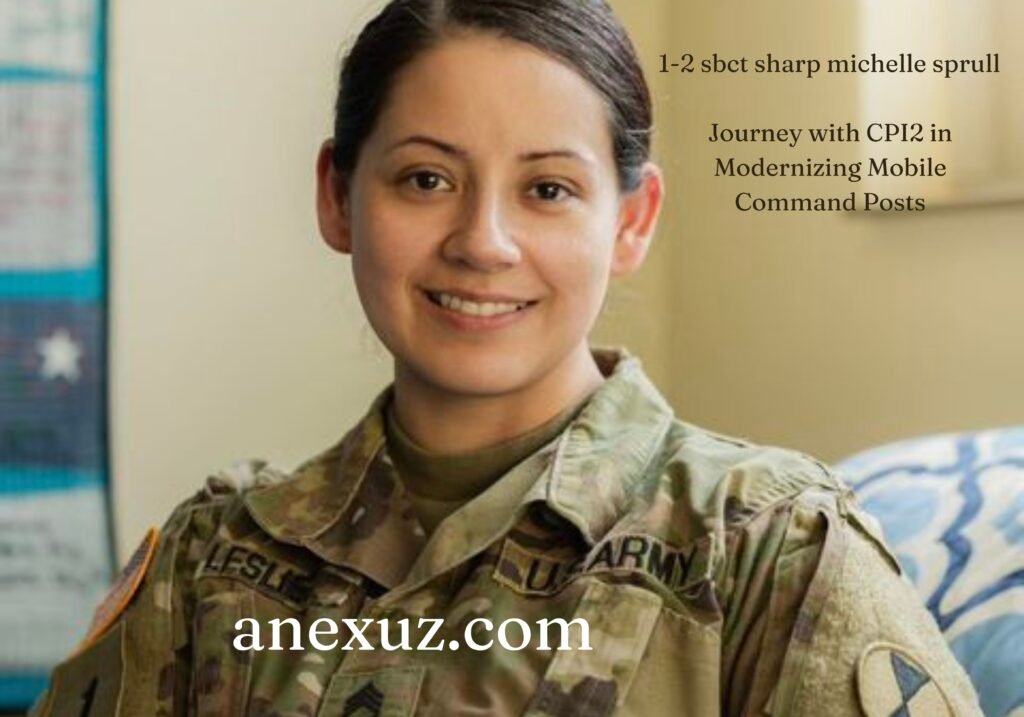Introduction
1-2 sbct sharp michelle sprull : 1st Stryker Brigade Combat Team (1-2 SBCT) is the United States Army’s part under the 2nd Infantry Division stationed at Joint Base Lewis-McChord. They are at the forefront of innovation in all the new strategies in modern wars.
The team, under Command Leadership by Michelle Sprull, is adopting the use of the Command Post Integrated Infrastructure, CPI2; flexible on-the-move capabilities for the command post critical to today’s and into the future military operations.
Such transformation commitment by leaders such as Sprull ensures the brigade is ready for large-scale operations.
Also Read : Clip Art:RGTQUXQKI_I= Baseball : Ultimate Guide to Baseball Clip Art
Role of 1-2 SBCT in Army Modernization
The CPI2 program is one of the most important efforts to increase the mobility, resilience, and rapid deployability of command posts under a variety of scenarios. 1-2 SBCT has been one of the first units to be adopted and tested with significant rigor in CPI2 configurations focused on creating adaptable, modular command posts that can change from stationary to mobile easily.
The commanders of the 1-2 SBCT have always faced critical operational threats. They, most often, need to shift bases abruptly without their access being hindered by the restrictions to their access of command systems.
CPI2 develops this by offering communications technologies well suited for diversified terrains and the combat demands under which leave the leaders, such as Sprull, fully connected to each other irrespective of the restrictions about geography and environment.
What Michelle Sprull contributes to 1-2 SBCT : 1-2 sbct sharp michelle sprull
The most distinctive aspect of Michelle Sprull’s leadership style is her emphasis on merging emergent technology with flexibility in strategy. Michelle’s work advances the US Army’s new thrust toward distributed command.
This is how the 1-2 SBCT becomes well-positioned to address combat at their level while contributing toward an overarching operational objective-an aspect not lost on units’ new on-the-move capability command and control as described under the U.S. Army’s objective in shaping more units capable of performing operations on the move.
Technical Enabling of the CPI2 Programme
The CPI2 program puts power sources and safe communication networks directly into the vehicle platforms of the 1-2 SBCT, thereby eliminating the formerly limiting logistical constraints.
For example, the on-board mobile generators enable command posts to deploy and establish themselves rapidly in support of the distinctive on-the-move operation capability of the 1-2 SBCT. With the incorporation of satellite communications and wireless networks, data and command channels are not interrupted.
This feature is critical in fast combat environments. CPI2 enables the Soldier to have digital fire support and a Secure But Unclassified – Encrypted network that supports real-time battlefield coordination and adaptability.
Key Features of CPI2 for Combat Readiness : 1-2 sbct sharp michelle sprull
Modularity: This modular program structure will allow the brigade to build its command posts with specifics related to missions. Such modularity ensures the unit remains prepared for combat situations of all types.
On-the-Move Capability: Units equipped with CPI2 will be able to begin conducting command operations from moving platforms. This enables communications to flow securely, ensuring soldiers receive information they need in advance.
Improved Communication – Satellite-based connectivity provides high-speed communication till distant areas and possesses updates on real-time, hence at the battlefields their commands’ decisions get strengthened, too.
Future of CPI2 with 1-2 SBCT
From the above lesson that when units like 1-2 SBCT is considered for improvement in the respective version of CPI2, then it will eventually come up with further voice command-based functionalities through the mechanism of wireless networking. As a result, further improvements in its operational mechanisms have been achieved with great flexibility.
The second phase of the design is called “CPI2 Next.” It is designed with the flexibility of various kits for vehicles so that the command post can be arranged according to the requirements set by a specific mission.
This development is in line with the objectives of Sprull, as it provides an improved adaptation of the unit for faster response and better tactical benefits in hostile environment.
FAQs on 1-2 sbct sharp michelle sprull
1. What is CPI2? What does it enable in the military?
CPI2 is an acronym that stands for Command Post Integrated Infrastructure. It will enable military units with the module and mobile command post infrastructure to allow commanders to quickly move and maintain their preparedness for operations without any hindrance.
2. What is the role of 1-2 SBCT in testing CPI2 technologies?
1-2 SBCT provided an environment for testing CPI2. It has enabled the U.S. Army to collect data and calibrate the technology. What it gets from the brigade informs future versions of CPI2, making them even more adaptable to the demand in combat.
3. How does CPI2 enhance communication during battle operations?
CPI2 integrates the high-speed satellite communications, secure wireless networks in a vehicle to offer real time data sharing and command update and improved coordination in such remote and hostile areas.
Conclusion
1-2 sbct sharp michelle sprull
Within the stewardship of mentors like Michelle Sprull, 1-2 SBCT has proved to become an integral actor in efforts by the army towards its modernization.
This is the brigade, the epitome of new and evolving technologies that take the concepts of the battlefield strategies into changing, evolving missions.
With ongoing development of CPI2, 1-2 SBCT’s future input would definitely be a part of an army that operates with unprecedented agility and resilience, yet superior in communications as well as tactical effectiveness.
This focused approach will place the 1-2 SBCT at the center of the modernization process of U.S. Army operations, establishing standards for command post functionality within a changing global military context. See More…
